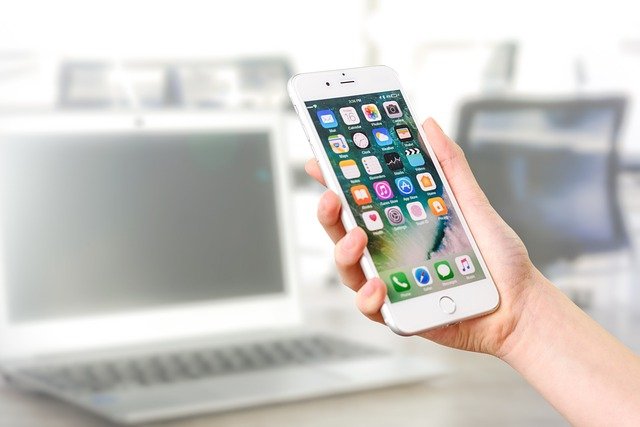Understanding Marketing Channels
Marketing channels are basically the routes you use to get your business noticed by customers. Getting to grips with these paths is key for working out a winning strategy that clicks with your audience.
Importance of Marketing Channels
Choosing the right channels is like picking the best tools for the job. They shape how your brand gets seen and heard. Take a tip from Semrush, which dubs the Rule of 7—folks need to bump into your brand at least seven times before they consider buying something. This underscores the need for varied marketing channels to make your brand stick.
Going for a full-on connected marketing approach doesn’t just keep the crowd coming back; it also boosts sales and gives you an advantage over competition (DesignLoud). Companies that really nail this approach hold onto a whopping 89% of customers. On the flip side, companies lagging in this area only manage to retain 33% (EverywhereMarketer).
| Metric | Strong Omni-Channel Strategy | Weak Omni-Channel Strategy |
|---|---|---|
| Customer Retention | 89% | 33% |
Customer Retention Strategies
Hanging on to your customers is the secret sauce for long-term success. A killer strategy is all about making sure all channels connect like a well-oiled machine. This tied-together approach bumps up customer happiness and loyalty. Studies show that 75% of B2B customers are itching to buy again from those who excel in connecting their channels (Trusted Shops).
Here’s how you can boost customer loyalty using your channels:
- Personalization: Use what you know about folks to tweak messages and deals to fit what they like.
- Consistent Messaging: Keep your brand voices singing the same tune across every channel for a smooth experience.
- Feedback Mechanisms: Set up ways to collect and act on customer feedback from everywhere it’s coming in, to level up your service.
- Incentive Programs: Tempt them with loyalty perks available across all platforms to keep them coming back for more.
Nailing the right marketing avenues and stepping up your retention game can majorly power-up your multi-channel marketing efforts. To check out examples galore, hop over to our page on marketing channel examples.
Benefits and Challenges of Omni-Channel Marketing
Jumping into an omni-channel marketing strategy can really boost how you connect with customers and ramp up those conversion numbers. But, it’s got its own share of hurdles that you’ll need to leap over for the best results.
Upping Your Game with Consistency
One great thing about omni-channel strategies is how they can crank up conversion rates. Keeping your product info steady across every platform builds trust. And trust is the magic ingredient that gets customers clicking that ‘buy’ button. A quick fact-check shows that businesses with a solid omni-channel game plan hang onto a whopping 89% of their customers—that’s leaps and bounds ahead of the usual 39% retention rate Trusted Shops.
Check out how each part of the strategy can tweak conversions:
| Omni-Channel Strategy Element | Influence on Conversion Rates |
|---|---|
| Consistent Messaging | Builds trust in customers |
| Accessible Product Information | Makes for smart buying choices |
| Seamless Customer Experience | Leaves customers happy and coming back for more |
Accenture found that 75% of B2B shoppers are game for another buy if their cross-channel experience was spot-on. Nailing that smooth customer journey is your key to building solid customer loyalty.
Threats and Disadvantages to Consider
Even with all the good stuff, throwing an omni-channel marketing plan into the mix comes with its headaches. For starters, the cell phone’s the culprit when it comes to showrooming—that’s when folks scout stuff in stores but nab a better deal online, and that can be a real punch to the gut for good old brick-and-mortar shops (Trusted Shops).
Other hurdles might be:
- Juggling too many channels can be a real mess
- Might end up costing more to run things
- Risk of confusing service if channels don’t mesh well
By spotting these bumps from the get-go, you can cook up a plan to keep things smooth and snag all the goodies omni-channel has to offer. For a deeper dive into smart marketing moves, check out marketing channel examples or marketing channel effectiveness.
Implementing a Strategy That Works
Crafting a winning omni-channel marketing plan isn’t just about drawing up blueprints; it’s more like putting together the pieces of a wild, tech-driven jigsaw puzzle. You’ve got to shuffle a few things around and, let’s face it, jump through some hoops.
What Needs to Change
Your company ain’t gonna cut it with the same ol’ setup. Marketing, whether it’s the traditional or the folks waving the digital flag, gotta shake hands and work together like a well-oiled machine. Picture it as getting both your offline and online squads singing from the same hymn sheet. That’s your ticket to customers who don’t skip a beat when shifting from your website to your physical store (Trusted Shops).
A bit of teardown and build-up is needed—integrated teams that perform like you’re running a Sherlock data squad to crack customer behavior codes.
| Change Needed | What it Means |
|---|---|
| Branding Dream Team | Consistent brand vibe everywhere. |
| All Hands on Deck Teams | Gossip ain’t the only thing being shared – insights too! |
| Data as King | Get the heads-up on customer quirks and desires. |
| Juicy Training | Equip your peeps with the savvy for seamless operation. |
Jumping Over Hurdles
Turning an omni-channel strategy from dream to reality? That’s a rodeo! You’ll tackle an avalanche of data, nail that one-size-fits-all message, and make sure your tech does more than take up space. Tech wizards like CRM can be your magic wand for turning data into customer fairy tales (HubSpot).
Getting everyone on the same page means more pep talks and less flip-flopping on tasks. Keep one eye on the prize and the other on market tremors, so your strategy doesn’t end up as yesterday’s news.
Here’s the rundown:
| What’s in the Way | How to Smash Through |
|---|---|
| Data Headaches | Blend channel insights into one glorious pot. |
| Mixed-up Messages | Declare peace with clear brand language. |
| Tech Turmoil | Call in CRM and automation gurus. |
| Training Starts | Drill the team to meet omni-channel benchmarks. |
Real-talk time: firms nailing omni-channel groove keep 89% of their customers around like loyal groupies. Compare that to a shaky 33% for those missing the beat (DesignLoud). Make these hurdles your stepping stones; you’ll be all set for a future that looks as bright as your vision. Dig deeper into our treasure trove of resources on marketing channels definition and omni-channel marketing approach.
Strategies for Success
When it comes to creating a killer omni-channel marketing plan, there are a few tricks of the trade to really make your efforts stand out. Wrapping your head around the Rule of 7 and taking a gander at some success stories can offer some handy pointers.
The Rule of 7 in Marketing
The Rule of 7 is like the basics in marketing. It’s the idea that a customer needs to see or hear about what you’re offering at least seven times before they hit that “buy” button. With different marketing avenues in your arsenal, you can help folks remember who you are and keep your brand stuck in their heads. Anytime someone bumps into your brand, you’re making them feel like they’ve known you forever, inching them closer to becoming a customer.
| Try Number | What They Do |
|---|---|
| 1 | Notice Your Brand |
| 2 | Think About It |
| 3 | Check Stuff Out |
| 4 | Read Reviews |
| 5 | Chat on Social |
| 6 | Open Your Emails |
| 7 | Finally, They Buy! |
By mixing up the ways you’re putting yourself out there, you keep appearing in front of the same folks, making them feel comfortable and willing to trust you. It’s about creating a seamless dance of familiar touchpoints getting customers all warmed up before they go and purchase.
Success Stories and Case Studies
Checking out success tales paints a pretty clear picture of how omni-channel marketing rocks. Take Spotify, for instance. They’ve grown like wild, raking in about $30 billion. They’re popping up everywhere, so folks can’t help but pay attention. It’s amazing what spreading yourself across multiple channels can do in terms of putting your name on the global stage.
Then there’s Disney, Virgin Atlantic, Bank of America, Amazon, and Starbucks — these heavyweights nail omni-channel strategies by making sure their customer experience is top notch, whether online or offline. They blend tech in their services like those perfectly stirred cocktails, making customers’ days easier and racking up some serious goodwill. Not only do they widen their nets, but they also fix problems faster and earn more, thanks to being all over the place whenever their customers are looking.
Studying these successful plays gives you a good idea of effective game plans you can use for building your own omni-channel strategy. Curious to see more examples? Peek into marketing channel examples to uncover even more insights for your business.
Getting the Most Out of Your Marketing Channels
To crank up your marketing game, you gotta make sure you’re getting all the juice outta those channels you’ve been working on. Organic search, paid ads, and social media all have big roles in making your brand pop and keeping folks interested.
Organic Search and Paid Advertising
With organic search, you’re tweaking your site and stuff so people find you easier on search engines. Done right, it can grab you a sweet 39.8% click-through on those top search results. But when you toss cash into ads, you’re looking at a bit lower, around 2.1% click-through, even if you’re parked at the first spot (Semrush).
Mixing organic search with paid ads is basically hedging your bets—balancing out where your traffic comes from. Here’s a quick comparison:
| Strategy | Organic Search | Paid Advertising |
|---|---|---|
| Cost | Keeps the wallet happy long-term | Pay as you go and it can add up quick |
| Time to See Results | Takes its sweet time to build up | Flashes right on your face instantly |
| Engaging Folks | Builds trust and feels right | Can feel pushy if not done right |
| Overall CTR | 39.8% | 2.1% |
Bringing both to the table helps you keep your feet firmly in the game, spreading your wings across those digital marketing spaces.
Social Media Marketing Strategies
Social media’s your straight shot to yakking with people directly—building up your crew and a solid brand fan base. On average, folks are glued to social media for about 2.5 hours each day, so it’s a golden chance to catch up with possible future buyers and the ones already hooked (Semrush).
To make it work, try these tricks:
- Content Creation: Share stuff that’s fun and worth talking about to get folks clicking that share button.
- Community Management: Keep the conversation flowing with comments, messages, and jumping into chats.
- Targeted Ads: Use the targeting mojo on social media to grab the right kind of eyeballs.
- Analytics Monitoring: Keep an eye on how your posts are doing so you can amp up your next moves.
While your marketing’s going social, it’s a good idea to make sure all your messages play nice together. This gives your brand the ‘all-in-one’ feel that sits at the heart of all-inclusive marketing where being consistent and thinking about your folks is what matters most (Persooa).
By squeezing the best outta organic search, paid ads, and bouncin’ social media methods, you’re not just upping your brand’s street cred but also making deeper connections with customers. Those strong bonds not only push sales but help your biz become the trusted go-to in your audience’s minds. Curious about more cool strategies? Check out our tips on how marketing channels work and how to use all those marketing distribution pathways.
Evolving Customer Expectations
Marketing isn’t a static gig—it’s constantly changing gears, especially with how customers’ wants keep shifting. These days, folks are all about getting what they want when they want it, and in a way that feels just for them. This means businesses are tossing out the playbook and are diving into a full-on, synchronized omni-channel marketing strategy.
The Personal Touch Revolution
Personalization is where it’s at. People don’t just want brands to notice them; they want to be known. They expect experiences curated just for them—across platforms and wherever they encounter a brand. A solid omni-channel approach makes sure customers get the same vibe and look, no matter where they are, so they can connect and engage when it’s most needed (HubSpot).
Did you know that 54% of customer-focused companies say their loyalty game has gotten stronger thanks to their omnichannel maneuvers? Companies that nail personalization not only get closer to their customers but also see happier clients and better sales numbers.
| Statistics | What’s the Big Deal? |
|---|---|
| 54% of companies loyal to customers saw improved retention | People stick around more |
| 62% saw fatter profit margins | Money in the bank through a seamless approach |
Want more on how to charm your audience with the right strategies? Check out our guide on marketing channel strategy.
Stepping into the Omnichannel Zone
Mixing up your marketing, sales, and service game across all channels—online or not—is what omnichannel is all about. It’s the secret to keeping customers coming back, building trust, and not spending more than you need (Persooa).
Going omni can be a game-changer for profits. Companies riding this wave see loyalty and revenues rise. With 62% of customer-minded businesses snagging better profit margins through omnichannel methods, it’s pretty much a no-brainer to invest in this holistic marketing vision (Emarsys).
To keep up with this trend, explore different digital marketing channels that can mesh well together. Getting on board with omnichannel not only sets your business up for success today; it carves out a clear path ahead of the competition.
Tools and Technologies for Optimization
You’re here to knock your omni-channel marketing strategy out of the park, right? Then you’ve got to have the right gear. It’s all in the tools you pick. Let’s chat about two heavy-hitters: CRM systems and those super-handy demand-side platforms, along with their trusty sidekicks, ticketing software.
CRM Systems for Personalization
Let’s get into why Customer Relationship Management (CRM) systems are like gold. These bad boys collect all that juicy customer info, helping you roll out the welcome mat in style, no matter where your customers find you. You’re basically playing detective, figuring out what makes them tick, and giving them exactly what they crave – a little personalized magic.
| Must-Have CRM Features | Why They’re a Game Changer |
|---|---|
| All Customer Data in One Spot | Makes personalized marketing a walk in the park |
| History of Customer Interactions | Allows you to respond like a boss with custom replies |
| Task Automation Tools | Lightens your marketing load and boosts efficiency |
| Data Insights & Reports | Turns numbers into smart moves |
Start working that CRM magic, and you’ll track what your customers are doing across multiple touchpoints without breaking a sweat. Keep that brand voice steady, and speak your customer’s language, morphing into a brand whisperer (HubSpot).
Demand-Side Platforms and Ticketing Software
Demand-Side Platforms (DSPs) are the Swiss Army knife for your ad game, making every dollar you spend on ads count. With DSPs, you buy ads like a pro, targeting folks who are actually interested in what you’ve got. Clean and precise ad placement equals happy wallet and audience.
| Cool Features of DSPs | Why You’ll Love Them |
|---|---|
| Bidding in Real-time | Puts your ad in front of the perfect eyes |
| Smart Audience Targeting | Boosts ads’ relevance and makes people click |
| All-in-one Campaign Management | Simplifies your advertising across boards |
And let’s not forget about ticketing software – your secret weapon for keeping up with customer questions. It’s like your customer service guardian angel, making sure no question goes unanswered, fast and efficiently. Plus, it plays nice with other tools, keeping your customer-karma in tip-top shape (Persooa).
Wrap these tools up into your strategy, and you’ve got yourself a customer experience dream team that delivers personal touches, leaving your customers feeling like VIPs. Want to see it in action? Take a cue from Pizza Hut. They’ve been knocking it out of the park with omni-channel success stories.
Differentiating Omnichannel from Multichannel
Grasping what sets omnichannel and multichannel marketing apart is a game-changer for building a killer marketing game plan. Both methods use more than one route to snag customers, but they go about it quite differently. Let’s dig into how.
Customer Vibe Check
The big idea here is how each method keeps your customers in the loop.
Multichannel marketing acts like a solo performer on each stage. It’s about being everywhere but doesn’t promise harmony. Your message might hit customers through varied routes, but there’s a chance things feel a bit off-key, creating a confusing medley.
Omnichannel marketing is more of a symphony orchestra. Every touchpoint—no matter where it is—hits the same note. This approach aims to create a memorable and consistent melody that nurtures loyalty and sticks with your customers long after the curtain falls.
Here’s a chart to paint the picture:
| Aspect | Multichannel Marketing | Omnichannel Marketing |
|---|---|---|
| Focus | Solo acts on different stages | Harmony and symphony among channels |
| Customer Experience | Sometimes off-key | Always keeping the rhythm |
| Engagement | A bit here, a bit there | Holds the customer from start to end |
| Strategy Orientation | Going with the flow, channel-tuned | In tune with the customer |
| Relationship Type | Quick transactions | Building something meaningful |
Crafting a Tight-Knit Brand Adventure
When you’re running the show as CEO, CMO, or business tycoon, picking between these methods should reflect what your brand aims to achieve. Multichannel might get the word out there, but omnichannel weaves a tapestry that ups the customer experience.
Going omnichannel means everything from the first “Hello” to the final “Thank you” matters. Unlike its multichannel sibling, omnichannel doesn’t just scatter messages; it weaves them together, keeping interactions fresh and memorable. This way, customers feel like stars of the show, enhancing how they connect with and recall your brand.
Letting these approaches work in unison can tune up your whole marketing gig to make sure you’re nailing both reach and harmony. Recognizing how to juggle these tactics might just tip the scales toward success in today’s fast-paced market.





















